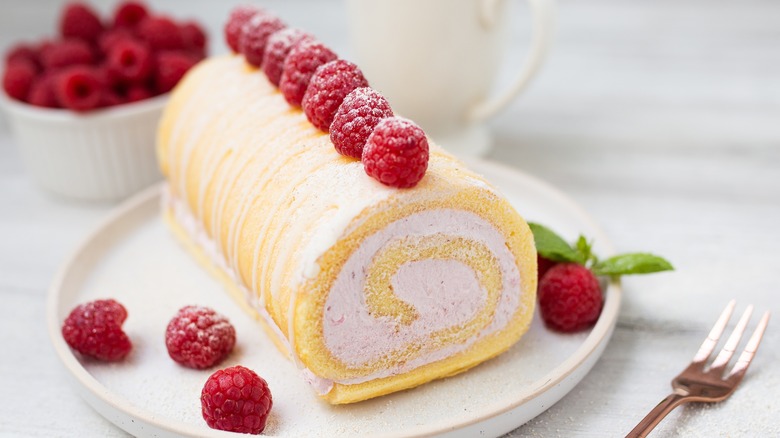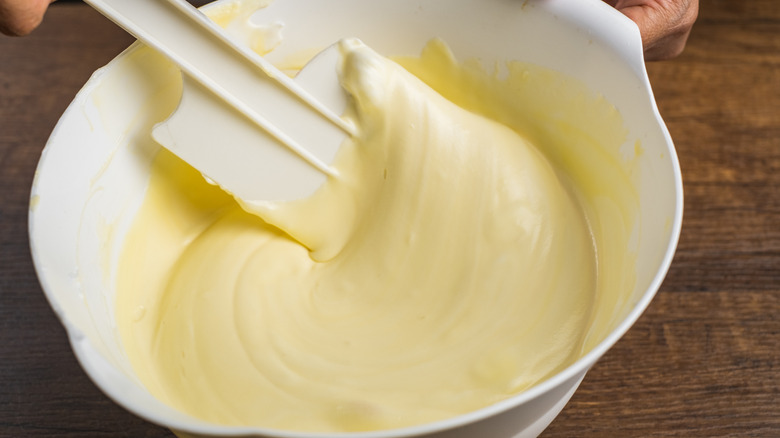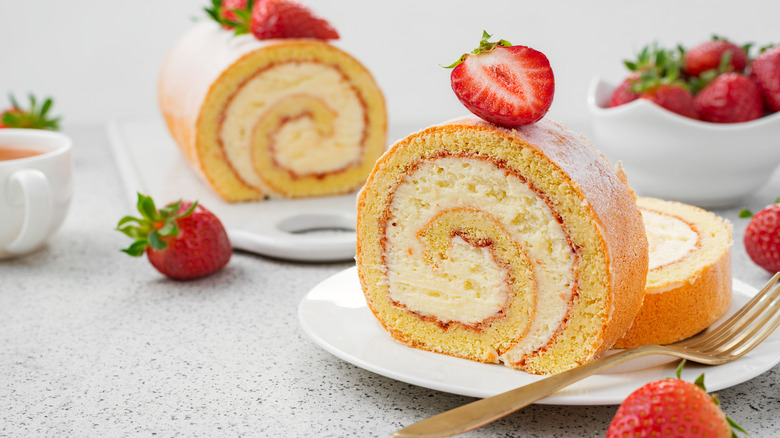The Essential Tip You Need To Give Your Cake Roll The Perfect Texture
Roll cakes are — exactly as the name implies — rolled. They're baked to be long and flat on a baking tray, then frosted and carefully rolled up into shape. The cakes, also called roulade cakes, aren't always frosted all around like a traditional cake might be, ensuring that you can see the beautiful spiral design on either end of the cake. They can, however, be topped with whipped cream, fresh fruit, or a light drizzle of icing.
When you're baking your cake roll, there is one simple trick to getting the fluffiest texture possible. As you begin mixing up the batter, you'll want to beat your eggs until they achieve a frothy texture. This will introduce some extra air bubbles into the batter that will be essential to the resulting texture of your bake — something that's imperative in order to successfully roll it. Then, the order in which you add your ingredients could make or break that texture. You'll want to fold in your dry ingredients last, just before you're ready to pour the batter into the cake pan.
Add your dry ingredients last
While you're mixing up the batter for your roll cake, you should focus primarily on mixing up the wet ingredients first, with one exception: Carefully adding your sugar in can help thicken the eggy mixture to give it a little bit more structure. Then, add the rest of your wet ingredients to thin it out again.
When you're ready to add the dry ingredients — like flour, seasonings, and salt — carefully fold them in right at the end. Once they've been added in, your batter should still be light and fluffy as you pour it onto the baking tray. Adding those dry ingredients last allows the batter to maintain its fluffy texture from the whipped eggs.
Once the cake bakes, that texture will transfer over to the finished product. A light, airy texture will make the cake easier to roll up once it's out of the oven, and it will certainly make for a pleasant treat to eat.
Air bubbles make for a better texture
Folding the dry ingredients in, rather than mixing them, could help preserve the integrity of the air bubbles formed during the egg beating. The heavier flour could pop those bubbles and leave your cake feeling a little denser if it's simply mixed in — especially if you're using an electric mixer.
Using a spatula to fold the dry ingredients into the batter, however, is a much gentler method of incorporating the ingredients that could protect those bubbles and allow your cake to bake up a little lighter. You'll want to be especially careful not to overmix the batter. Any extra motion creates more risk of popping those bubbles and creating a denser cake.
If you've added all your ingredients at the correct time and using the correct methods of integration, you should wind up with a light and fluffy cake at the end. Then, you can easily roll it, decorate it, cut it, and serve up the picture perfect slices.


